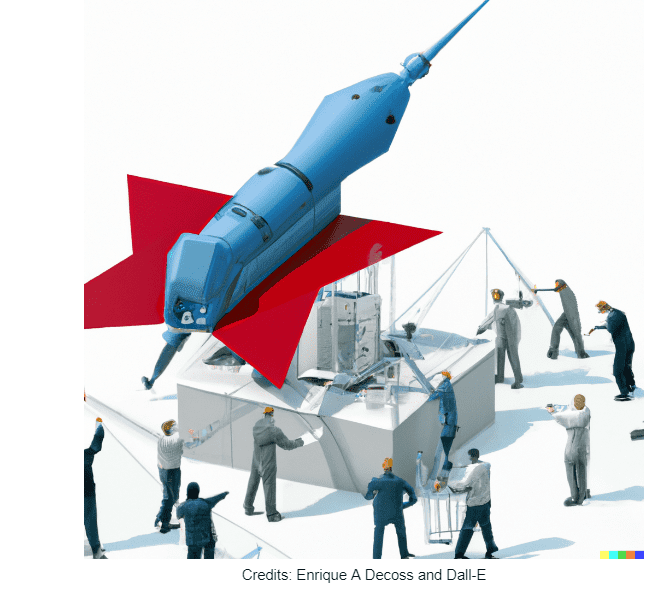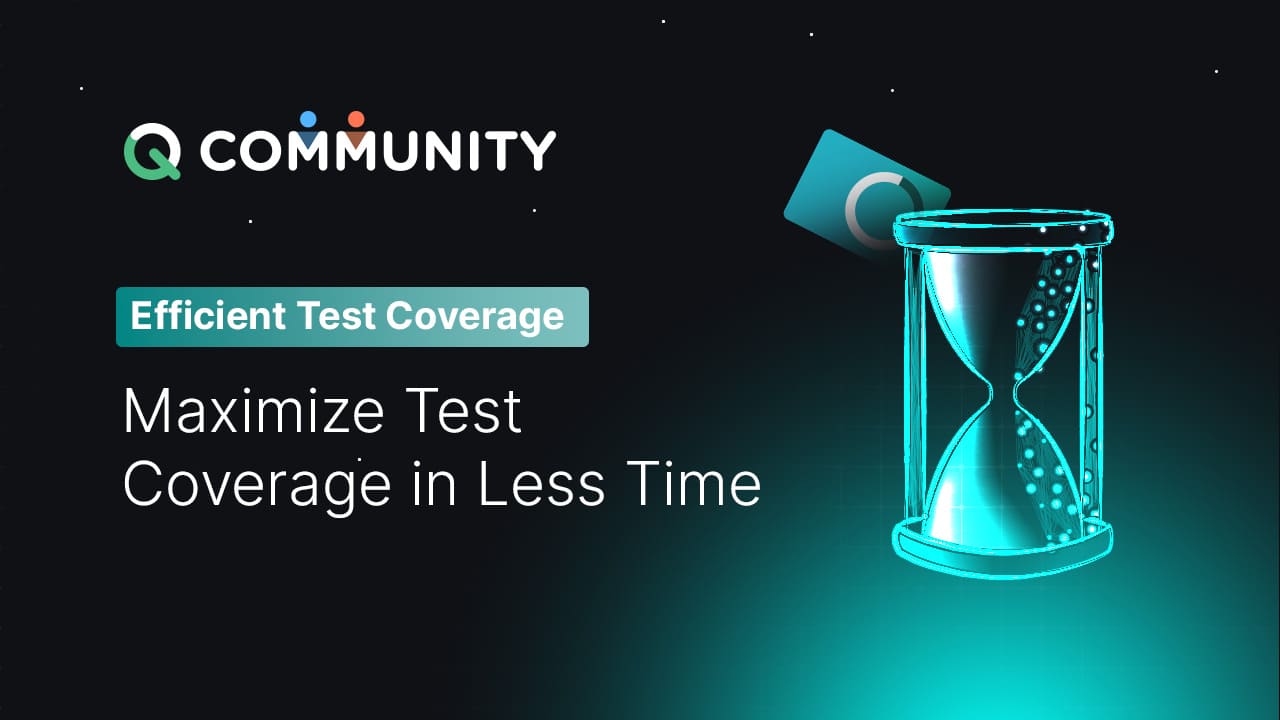Efficient Test Coverage: Maximize Test Coverage in Less Time

Software testing is essential in the Agile Development life cycle. Test coverage helps the testers to improve the quality of test cases that covers the missing areas. It is a crucial metric in software testing and code quality to assess the quantity of testing met by a set of tests.
Lately, during the Agile revolution, we have witnessed the reduction of test coverage and focus on the Minimal Value Testing approach; sometimes, in some startups, we have two weeks sprints and deliver incremental as much as we can; for those who use SAFe, we have release trains (Agile Release Trains (ARTs) cannot go fast without high quality) and more time to test and cover using functional Testing and Automation Testing.

As we mentioned, efficient test coverage is crucial to software testing. It ensures that all critical functionalities and features are thoroughly tested, reducing the probability of bugs and errors in the final product (It depends on multiple factors, but the main idea is to minimize failures in Production). However, testing can be time-consuming, especially when dealing with complex systems.
This blog post explores strategies and techniques for maximizing test coverage in less time, enabling software development teams to deliver high-quality products within tight deadlines.
Test Prioritization and Risk Assessment
Test prioritization is a crucial aspect of Quality Assurance. It aims to optimize resources and efforts by identifying and prioritizing tests based on their potential customer impact and the likelihood of uncovering defects. This process is supported by risk assessment, which plays an integral role in determining the areas of the application that are most critical and require more testing effort.
Risk assessment involves analyzing various factors, such as the complexity of functionalities, business impact, user expectations, and historical data, to evaluate the potential risks associated with different application flows. Using a risk assessment approach based on customer behavior, testing teams can gain insights into the areas more prone to defects or critical for the application's overall functioning.
Impact analysis is another technique that aids in test prioritization. It involves analyzing the potential impact of a defect on the application, its users, and the business. Testing teams can allocate their resources more effectively considering the defects' outcomes. Tests significantly impacting critical functionalities or user experience are prioritized, allowing for comprehensive coverage of essential aspects within time constraints.
If we apply these techniques, test prioritization enables testing teams to focus their efforts and resources on the areas of the application that are most likely to have defects or significant impact. This approach maximizes test coverage and helps deliver a higher-quality product within a limited time.
Your business guide to codeless test automation
Ready to execute continuous test automation without writing a single code?

Better Test Coverage using Test Automation
Test automation contributes to better test coverage by enabling the execution of a more significant number of tests, increasing the efficiency and effectiveness of the testing process.
If we identify the customer-facing repetitive and time-consuming tests, test automation significantly reduces the testing effort required for those tests. Tasks such as data input, form filling, and UI interactions can be automated, freeing testers to focus on more complex edge cases and exploratory testing activities. It saves significant time, minimizes the risk of human error, and ensures consistent execution of test cases.
Test automation also enables regression testing to be performed effectively. When new features or changes are introduced to the software, test automation can be rerun on the updated version to ensure that existing functionalities have not been adversely affected. This rapid feedback loop allows for the early detection of defects and helps maintain the stability and reliability of the software.
In addition to improving efficiency, test automation enhances test coverage by enabling the execution of more test cases. Functional testing limits the number of test cases that can be performed within a given time frame. Test Automation can be executed across different configurations, browsers, devices, and environments, providing broader coverage and identifying potential issues that may not be caught through functional testing alone.
However, it's important to note that automation testing is not a one-size-fits-all solution. It requires careful planning, maintenance, and continuous updates to adapt to evolving application requirements. Test Automation efforts should be focused on critical functionalities and high-risk areas where maximum coverage is needed.
Test Case Optimization
We discussed the Test prioritization and Risk assessment. Still, it is time to talk about Test case optimization, which focuses on designing and selecting test cases to maximize test coverage while minimizing redundancy, and the main goal is to ensure that the testing process is efficient, thorough, and effective in preventing defects.
Several techniques contribute to test case optimization, enabling the identification of representative test cases that cover a wide range of scenarios. One such technique is equivalence partitioning, which involves dividing the input space into equivalence classes based on similar characteristics. Test cases are then selected to represent each equivalence class, ensuring that various inputs are tested without executing every possible combination.
Boundary value analysis is another technique used for test case optimization. It focuses on testing values at the boundaries of equivalence classes, as they are more likely to uncover defects. Selecting test cases that cover the lower and upper edges of each equivalence class increases the likelihood of detecting errors while avoiding redundant tests.
Pairwise testing is a combinatorial technique that helps reduce the number of test cases needed to achieve comprehensive coverage. It involves selecting a subset of test cases that cover all possible combinations of two input parameters. Since specific combinations of inputs often trigger many defects, pairwise testing ensures that critical combinations are tested without the need for a total number of test cases.
In addition to these techniques, prioritization is vital in test case optimization. If we identify the application's critical functionalities and error-prone areas, testing efforts can be focused on these areas to ensure adequate coverage. Prioritizing essential functionalities ensures that they receive thorough testing, reducing the risk of significant issues going undetected.
Work on BIG ideas, without big work.
Simplify test automation with our Unified platform for Enterprise stack across Web, Mobile, API, Desktop & Backend

Efficient Test Coverage in Continuous Testing
Efficient test coverage is a critical aspect of Continuous Testing (CT) that ensures the software is thoroughly tested and meets quality standards throughout its development lifecycle. CT emphasizes integrating testing activities into every stage of the software delivery process, enabling the early detection of defects and reducing the risk of issues in Production.

In CT, continuous feedback and collaboration among testers, developers, and stakeholders are crucial for achieving efficient coverage. We need to share insights, identify gaps, and address issues early on; the effectiveness of testing efforts can be enhanced, leading to comprehensive coverage throughout the CT process.
Efficient test coverage in CT ensures that critical functionalities are thoroughly tested, risks are mitigated, and potential issues are identified early.
Wrapping Up
Efficient test coverage plays a vital role in ensuring software quality. As Testers, we must employ strategies such as test prioritization, automation, test case optimization, exploratory testing, and adopting CT practices. Software development teams can maximize test coverage in less time. Prioritizing tests based on risk, automating repetitive tasks, optimizing test cases, and incorporating exploratory testing enables teams to uncover defects efficiently.
Additionally, integrating testing early in the development process through CI/CD practices provides rapid feedback, reducing the overall testing time. Embracing these efficient test coverage practices, software development teams can deliver high-quality products within tight deadlines, ultimately enhancing customer satisfaction and the organization's reputation.
Happy Bug Hunting!
Discover More
 Importance Of Business Value of Testing
Importance Of Business Value of Testing
Importance Of Business Value of Testing
 What Is TestOps? Implementation, Stages & Quality
What Is TestOps? Implementation, Stages & Quality
































